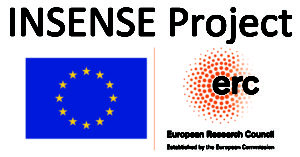Oscar Ferrante’s very cool work on statistical learning of distractor suppression is to appear in JoN. Congrats Oscar!
Ferrante, O., Zhigalov, A., Hickey, C., & Jensen, O. (in press). Statistical Learning of Distractor Suppression Down-Regulates Pre-Stimulus Neural Excitability in Early Visual Cortex. The Journal of Neuroscience.
A preprint is available here.
Visual attention is highly influenced by past experiences. Recent behavioral research has shown that expectations about the spatial location of distractors within a search array are implicitly learned, with expected distractors becoming less interfering. Little is known about the neural mechanism supporting this form of statistical learning. Here we used magnetoencephalography (MEG) to measure human brain activity to test whether proactive mechanisms are involved in the statistical learning of distractor locations. Specifically, we used a new technique called rapid invisible frequency tagging (RIFT) to assess neural excitability in early visual cortex during statistical learning of distractor suppression, while concurrently investigating the modulation of posterior alpha-band activity (8-12 Hz). Male and female human participants performed a visual search task in which a target was occasionally presented alongside a color-singleton distractor. Unbeknown to the participants, the distracting stimuli were presented with different probabilities across the two hemifields. RIFT analysis showed that early visual cortex exhibited reduced neural excitability in the pre-stimulus interval at retinotopic locations associated with higher distractor probabilities. In contrast, we did not find any evidence of expectation-driven distractor suppression in alpha-band activity. These findings indicate that proactive mechanisms of attention are involved in predictive distractor suppression and that these mechanisms are associated with altered neural excitability in early visual cortex. Moreover, our findings indicate that RIFT and alpha-band activity might subtend different and possibly independent attentional mechanisms.
Read More